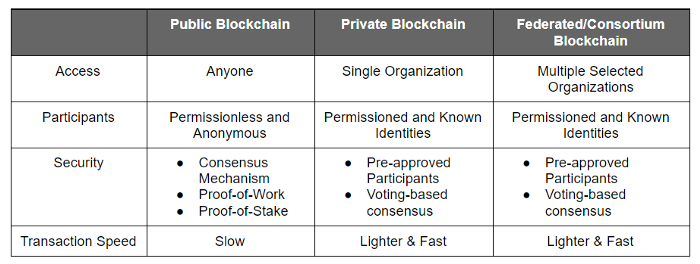When we build a blockchain solution, inevitably the decision must be made as to what type is best suited to meet the business needs. It is fairly common for there to be confusion about blockchain types, most often associated with consensus algorithms. Hence, it is important to have a clear understanding of the available choices.
- Public blockchain — permissionless; anybody can access and read, write or participate without explicit permission or authorization. A public blockchain is decentralised and has no single network-controlled entity. It has more complex rules and consensus algorithms for better security. It is computationally expensive to mine and adds a new block because the computational power is distributed globally, e.g. Bitcoin, Etherum etc.
There are also other types of blockchain that play an important role in replacing some classical models of centralised networks. Private institutions are leveraging the main idea behind the blockchain and applying it to upgrade their legacy systems:
Permissioned (private) blockchain — only the members of the network can read/write/audit the blockchain. Consensus is based on a multi-party consensus algorithm. There are critics who do not consider private blockchain as “real” blockchain technology. With its centralised and exclusive nature, it defeats the purpose of the original blockchain idea. This model is faster and more cost-effective because it is hard to tamper with data and easy to validate transactions. In this model, there are permissions for nodes that can be part of the network. Also, this is less secure than a public blockchain as we make it accessible to a bigger group of users. A fine representation of a private blockchain is Linux Foundation's implementation, Hyperledger Fabric.
Federated/Consortium blockchain — this is also a private and permissioned blockchain where entities can become members of the network by prior approval or voting. This type provides all the benefits of a private blockchain but adds another major one: removing the consolidation of power to only one company. This is a good model for organisational collaboration.







Top comments (0)